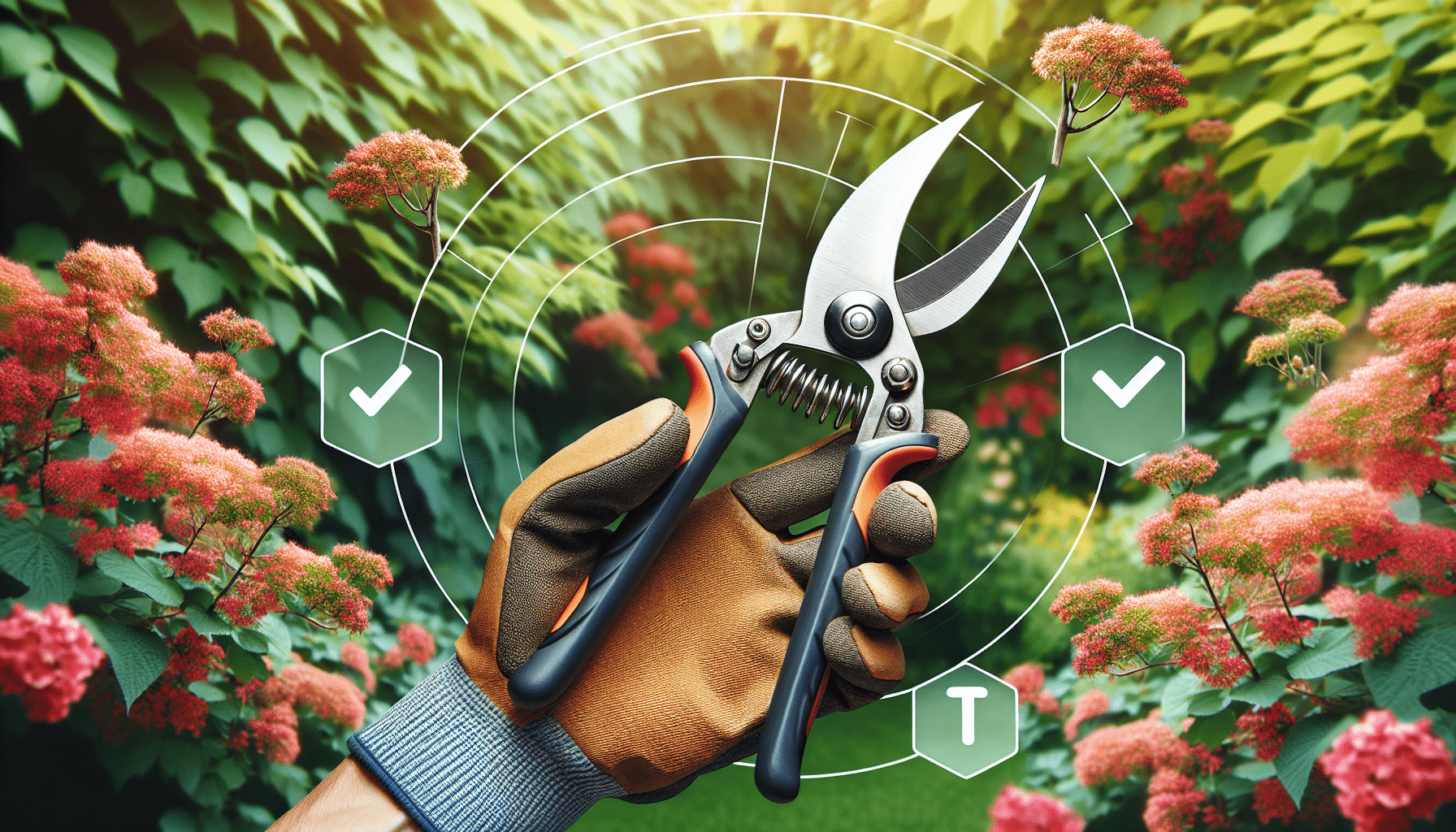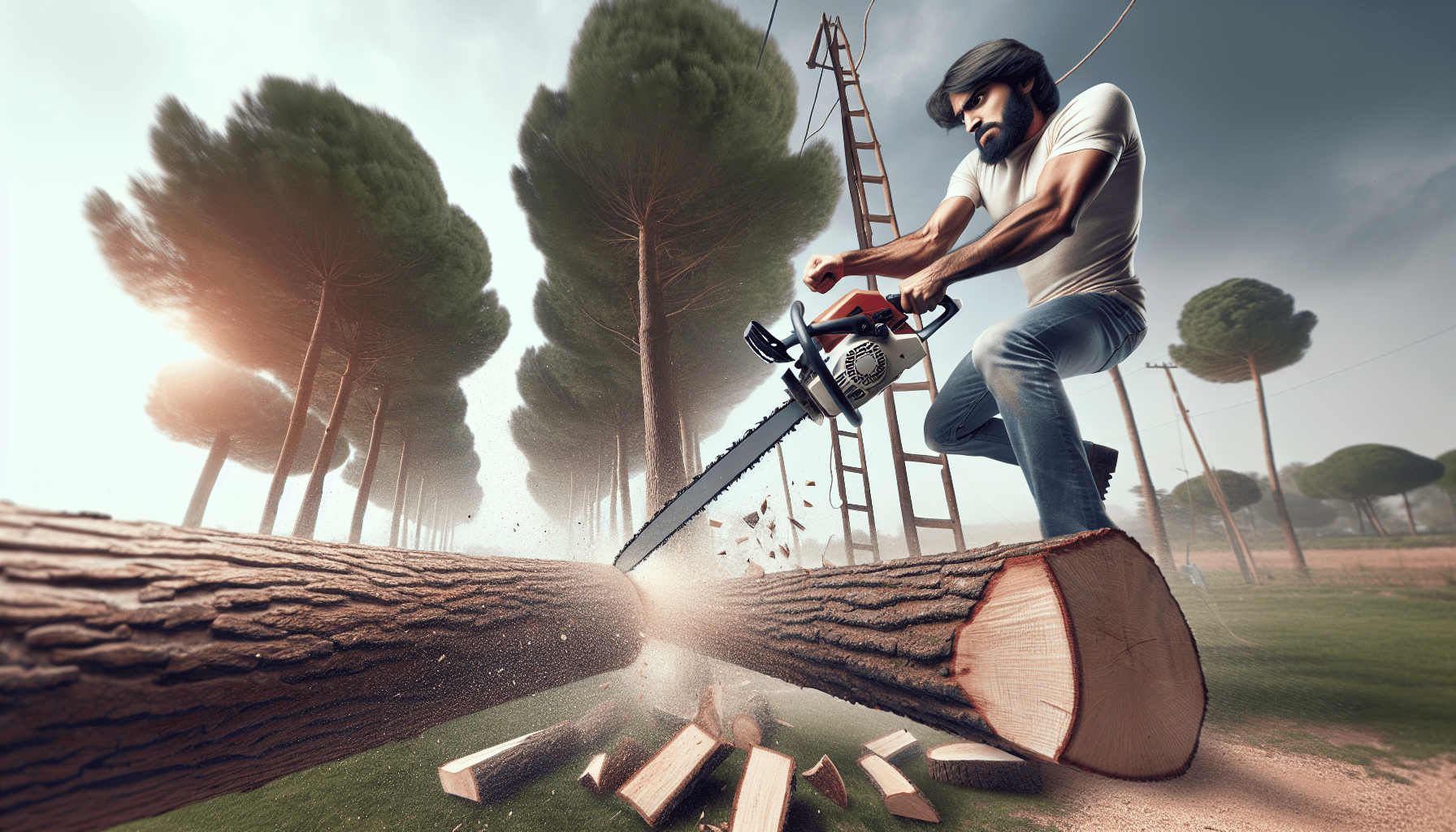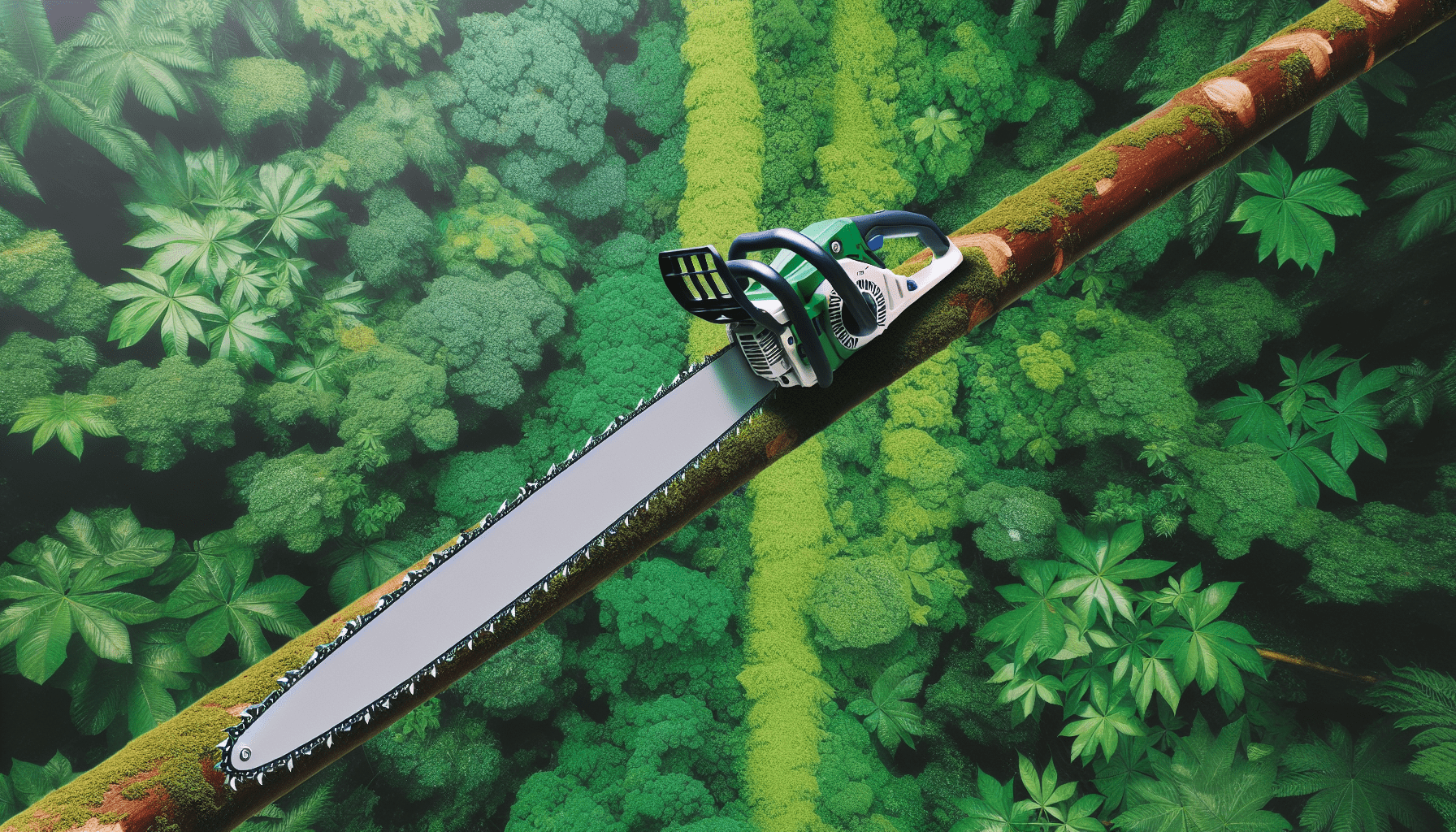If you’re wondering how to make your tree pruning endeavors a breeze, then look no further. In this article, we will explore the various tools available that can help you achieve the perfect trim for your trees. From hand pruners to loppers, we’ll cover all the essentials and highlight the benefits and specific uses of each. So grab your gardening gloves and get ready to uncover the best tool for pruning trees! When it comes to pruning trees, having the right tools can make all the difference. With a variety of options available, it’s important to understand the different types of tree pruning tools and how to choose the best one for your needs. In this comprehensive article, we will explore the various types of pruning tools, considerations for choosing the right tool, and maintenance and care tips to keep your tools in top shape.
Types of Tree Pruning Tools
Hand Pruners
Hand pruners, also known as secateurs, are small handheld tools that are perfect for trimming small branches and twigs. They come in a variety of designs, but the most common types are bypass pruners, anvil pruners, and ratchet pruners.
Bypass Pruners
Bypass pruners have two curved blades that pass by each other when cutting, similar to scissors. These pruners are ideal for making clean cuts on living plants, as they provide a precise and smooth cut. They are best suited for cutting branches up to ¾ inch in diameter.
Anvil Pruners
Anvil pruners have a single straight blade that cuts against a flat surface, known as the anvil. These pruners are more suitable for dead or dry branches, as they tend to crush live branches due to their cutting action. Anvil pruners are ideal for cutting branches up to ⅞ inch in diameter.
Ratchet Pruners
Ratchet pruners work on a ratcheting mechanism that allows you to make cuts in stages. This feature makes them ideal for people with weaker hand strength or those pruning thicker branches. Ratchet pruners are capable of cutting branches up to 1 inch in diameter.
Loppers
Loppers are larger pruning tools with long handles that provide additional leverage for cutting thicker branches. Similar to hand pruners, loppers come in three main types: bypass loppers, anvil loppers, and ratchet loppers.
Bypass Loppers
Bypass loppers work similarly to bypass pruners, using two curved blades that pass by each other. They are designed to cut branches up to 2 inches thick, making them suitable for medium-sized branches. Bypass loppers provide clean and precise cuts, making them a popular choice among gardeners and arborists.
Anvil Loppers
Anvil loppers, like anvil pruners, have a single straight blade that cuts against a flat surface. They are best suited for cutting dry or dead wood and can handle branches up to 2 inches in diameter. Anvil loppers tend to crush live branches, so they are not recommended for pruning living plants.
Ratchet Loppers
Ratchet loppers, similar to ratchet pruners, feature a ratcheting mechanism that allows for easier cutting of thicker branches. The ratchet action reduces the effort required to make a cut and enables you to cut through branches up to 2 inches thick with ease.
Pruning Saws
For even thicker branches that loppers can’t handle, pruning saws are the go-to tools. Pruning saws come in different styles, including folding pruning saws, fixed blade pruning saws, and pole pruning saws.
Folding Pruning Saws
Folding pruning saws, as the name suggests, have blades that fold into the handle, making them compact and easy to carry. These saws are suitable for cutting branches up to 3 inches thick and are perfect for light to moderate pruning jobs.
Fixed Blade Pruning Saws
Fixed blade pruning saws have a non-folding blade that provides additional stability and strength. These saws are capable of cutting branches up to 6 inches thick, making them suitable for heavy-duty pruning. Fixed blade pruning saws are often the tool of choice for professional arborists.
Pole Pruning Saws
Pole pruning saws are designed specifically for cutting high branches without the need for a ladder. These saws have a long extendable pole that allows you to reach branches that would otherwise be inaccessible. Pole pruning saws are a great tool for pruning tall trees safely and efficiently.
Pole Pruners
As mentioned earlier, pole pruning saws are great for reaching high branches, but sometimes you may only need to trim or prune smaller branches. That’s where pole pruners come in. Pole pruners are available in three main types: manual pole pruners, electric pole pruners, and gas pole pruners.
Manual Pole Pruners
Manual pole pruners consist of a long telescopic pole with a pruning head at the end. By using a rope or pulley system, you can extend the pole and operate the pruning head to trim or cut branches. Manual pole pruners are lightweight and easy to use, making them a popular choice for homeowners.
Electric Pole Pruners
Electric pole pruners are powered by electricity and feature a small chainsaw at the end of a telescopic pole. With the push of a button, you can extend the pole and use the chainsaw to trim branches. Electric pole pruners are ideal for small to medium-sized branches and are more suitable for residential use.
Gas Pole Pruners
Gas pole pruners are powered by a small engine and are capable of handling larger branches compared to the other types. These pruners are suitable for professional or heavy-duty use and allow for faster and more efficient pruning. Gas pole pruners are known for their power and versatility.
Hedge Shears
Hedge shears are designed specifically for trimming hedges or shrubs, but they can also be used for light pruning of small branches. Hedge shears come in three main types: manual hedge shears, electric hedge shears, and cordless hedge shears.
Manual Hedge Shears
Manual hedge shears consist of two sharp blades that can be opened and closed by squeezing the handles together. These shears are great for precise trimming and shaping of hedges, but they may not be suitable for heavy pruning. Manual hedge shears are lightweight and easy to maneuver.
Electric Hedge Shears
Electric hedge shears are powered by electricity and feature a set of reciprocating blades that move back and forth rapidly to trim branches or hedges. These shears are suitable for medium-sized branches and allow for faster and more efficient cutting. Electric hedge shears are a popular choice among homeowners and landscapers.
Cordless Hedge Shears
Cordless hedge shears are similar to electric hedge shears but do not require a power cord. These shears are powered by rechargeable batteries, providing you with freedom of movement without being limited by a power source. Cordless hedge shears are convenient and suitable for small to medium-sized branches.
Pruning Knives
Pruning knives are versatile tools that can be used for a variety of pruning tasks, including bud trimming, grafting, and cutting small branches. Pruning knives come in three main types: folding pruning knives, fixed blade pruning knives, and grafting knives.
Folding Pruning Knives
Folding pruning knives are small pocket-sized knives with a folding blade. These knives are compact and easy to carry, making them a handy tool for on-the-go pruning. Folding pruning knives are suitable for light pruning tasks and can also serve as a general-purpose utility knife.
Fixed Blade Pruning Knives
Fixed blade pruning knives have a non-folding blade that provides additional strength and durability. These knives are suitable for heavier pruning tasks and can handle branches up to a certain thickness. Fixed blade pruning knives are often preferred by professionals due to their sturdiness and reliability.
Grafting Knives
Grafting knives have a specialized blade and shape that are specifically designed for grafting or budding techniques. These knives are used to make clean and precise cuts when joining different plant parts together. Grafting knives are a must-have tool for gardeners and horticulturists practicing grafting techniques.
Considerations for Choosing a Pruning Tool
Now that we have explored the different types of pruning tools available, let’s discuss some important considerations to keep in mind when choosing the right tool for your pruning needs.
Type of Tree and Branches
The type of tree and branches you will be pruning play a crucial role in determining the appropriate tool. Different tools are designed to handle specific types of wood and branches. For example, hand pruners and loppers are more suitable for live branches, while pruning saws are ideal for thicker, harder branches.
Size and Thickness of Branches
Consider the size and thickness of the branches you will be pruning. Smaller branches can be trimmed with hand pruners or hedge shears, while larger branches may require loppers or pruning saws. Choosing a tool that can handle the branch size you will be working with ensures efficient and effective pruning.
Reach and Accessibility
When pruning trees, reach and accessibility are important factors to consider. If you are unable to reach high branches, pole pruners or pole pruning saws are necessary tools. On the other hand, if you are working on ground-level shrubs or hedges, manual hedge shears or hand pruners would be more suitable.
Safety Features
Safety should always be a top priority when pruning trees. Look for tools that have safety features such as locking mechanisms or ergonomic handles to reduce the risk of accidents or injuries. Tools with non-slip grips and built-in safety guards provide added protection during pruning.
Ergonomics and Comfort
Since pruning can be a physically demanding task, it’s important to choose tools that are ergonomically designed and comfortable to use. Look for pruning tools with cushioned handles or ergonomic grips that reduce strain and fatigue. A comfortable tool will allow you to prune for extended periods without discomfort.
Maintenance and Care
To prolong the life of your pruning tools and ensure their optimal performance, regular maintenance and care are essential. Here are some important tips to keep in mind:
Cleaning and Lubrication
After each use, clean your pruning tools to remove any sap or debris that may have accumulated. Use a brush or cloth to wipe off dirt, and if necessary, wash the tools with mild soap and water. Once cleaned, dry the tools thoroughly to prevent rust. Lubricate the moving parts, such as the blades or joints, with oil to prevent sticking and enhance smooth operation.
Sharpening and Blade Replacement
Sharp blades are vital for clean and efficient pruning cuts. Regularly inspect the blades of your pruning tools for any signs of dullness or damage. Use a sharpening stone or file to sharpen the blades if necessary. If the blades are severely worn or damaged, consider replacing them to ensure optimal cutting performance.
Additional Tools for Pruning
In addition to the main pruning tools discussed above, there are a few additional tools and equipment that can come in handy during pruning tasks.
Safety Equipment
When pruning trees, it’s important to prioritize safety. Wear protective gear such as gloves, safety glasses, and sturdy footwear to protect yourself from thorns, falling debris, or accidental cuts. Depending on the nature of the pruning job, consider using a safety helmet or ear protection as well.
Tree Climbing Gear
For pruning tasks that require working at heights, such as tree canopy pruning, investing in proper tree climbing gear is essential. This may include items such as climbing harnesses, climbing ropes, and climbing spikes. It is important to receive proper training on how to use this equipment safely and effectively.
Pruning Sealers
Pruning sealers or wound dressings can be used to cover large pruning cuts to protect them from pests, diseases, or excessive moisture. While the use of pruning sealers is subject to debate among professionals, they can be beneficial in certain situations, such as when pruning susceptible trees or during specific times of the year.
In conclusion, choosing the right pruning tool is crucial for successful and efficient tree pruning. Whether you are working with small branches or thick limbs, there is a tool available to suit your needs. Consider the type of tree and branches, the size and thickness of branches, reach and accessibility, safety features, and ergonomics when selecting a pruning tool. Remember to properly maintain and care for your tools to ensure their longevity. By following these guidelines and using the right tools, you will be well-equipped to tackle any pruning task with ease and achieve beautiful and healthy trees.



